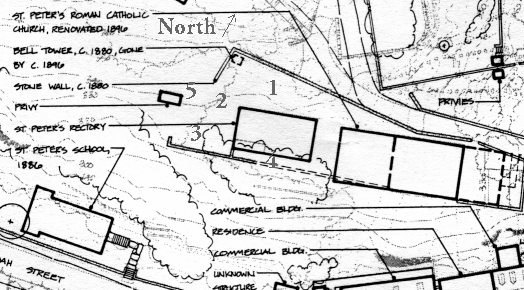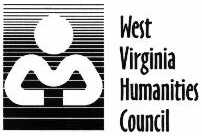| Our archaeological investigations in the summer of 2000 focused on the excavation of three-foot-square units and one-foot-wide shovel test pits along a grid of survey lines (called transects) which we laid out at the site along the cardinal directions. We excavated 26 units and over 50 shovel test pits in the areas surrounding the old School building (which is now the Rectory) and Church. Using a fairly traditional approach for such a well-defined site, we excavated a series of units every six feet along a transect running east to west in area 1 on the map image below, another north-south transect in area 2, and east-west transects in areas 3 and 4. We uncovered thousands of artifacts, including an array of 19th century ceramic types, iron hardware, two religious artifacts, and various materials from later time periods as well. We have not yet excavated the privy structure in area 5, because we found a fine young rattlesnake had taken up residence there. If appropriate, we will excavate the privy and the surrounding area after we devise a safe way to relocate this local inhabitant to a new residence elsewhere.

This map indicates the location of the 1833 Church building's east and west facades with dashed lines; the solid lines show the "footprint" of the current Church, built in 1896. This map also indicates that a timber-framed bell tower was located on the south side of the north retaining wall, from approximately 1880 until 1896 or 1897. Examining a number of photographs taken from a distance of the Church in the 1880's and 1890's (including ones taken in 1895 and 1896), we were initially intrigued by the question of whether this bell tower was more likely located on the north side of that retaining wall, just above the number "1" in this image. However, a photograph taken in May, 1886 of nearby St. John's Episcopal Church, shows this tower in the location depicted on the map above: just on the south side of the north retaining wall. Interestingly, our excavations in that area did not show evidence of the footprint of the tower's foundations, nor of compaction of the soil. One would expect to find such compaction if a large structure like the bell tower had been located there and the soil layers had remained undisturbed thereafter. This lack of undisturbed, compacted soil most likely is the result of later landscaping and construction changes, and associated digging-up of the grounds, which obliterated the original footprints of this bell tower. |

